Time to talk: How chat tech can drive social change
The challenge of providing access to services and resources in underserved communities is under a bigger spotlight than ever before. Some are turning to WhatsApp chatbots and messaging services.

In the past 18 months, the challenge of getting vital information and resources to underserved communities has come under the spotlight more than ever for social enterprises.
Many organizations have been turning to mobile technology to resolve both existing and new access challenges created by the pandemic. A 2019 report found that around half the world’s population uses mobile internet, and with access to it becoming cheaper, messaging services are an increasingly attractive tool.
WhatsApp, for example, currently reaches around 2 billion people worldwide. And its use during the pandemic shows how it is seen as a key means for communication with governments, nonprofits, and international organizations already sending over 4 billion messages on COVID-19 via the platform.
“If you look at some of the areas where we operate, WhatsApp has really good usage,” said Rich Bryson, chief strategy and marketing officer at Reach52, a social enterprise that aims to improve access to essential health services in Kenya and South and Southeast Asia. “Just as we’re going on the ground to where the communities are through community health workers and members of the communities, we can go to where they are online through WhatsApp.”
Social enterprises are getting help to create chat applications and chatbots. This June, 10 organizations, including Reach52, were selected to join the Chat for Impact Accelerator, receiving up to $50,000 in financial support and mentorship to build a WhatsApp messaging service.
“This is such a new area that there is no playbook for how to do it, and do it right. But that’s what’s exciting — because we know we’re charting new territory, we know that we’re kind of inventing the space.”
The support came after they presented their cases in May’s Chat for Impact Summit, powered by WhatsApp in partnership with tech nonprofit Praekelt.org and the social change platform it incubates, Turn.io.
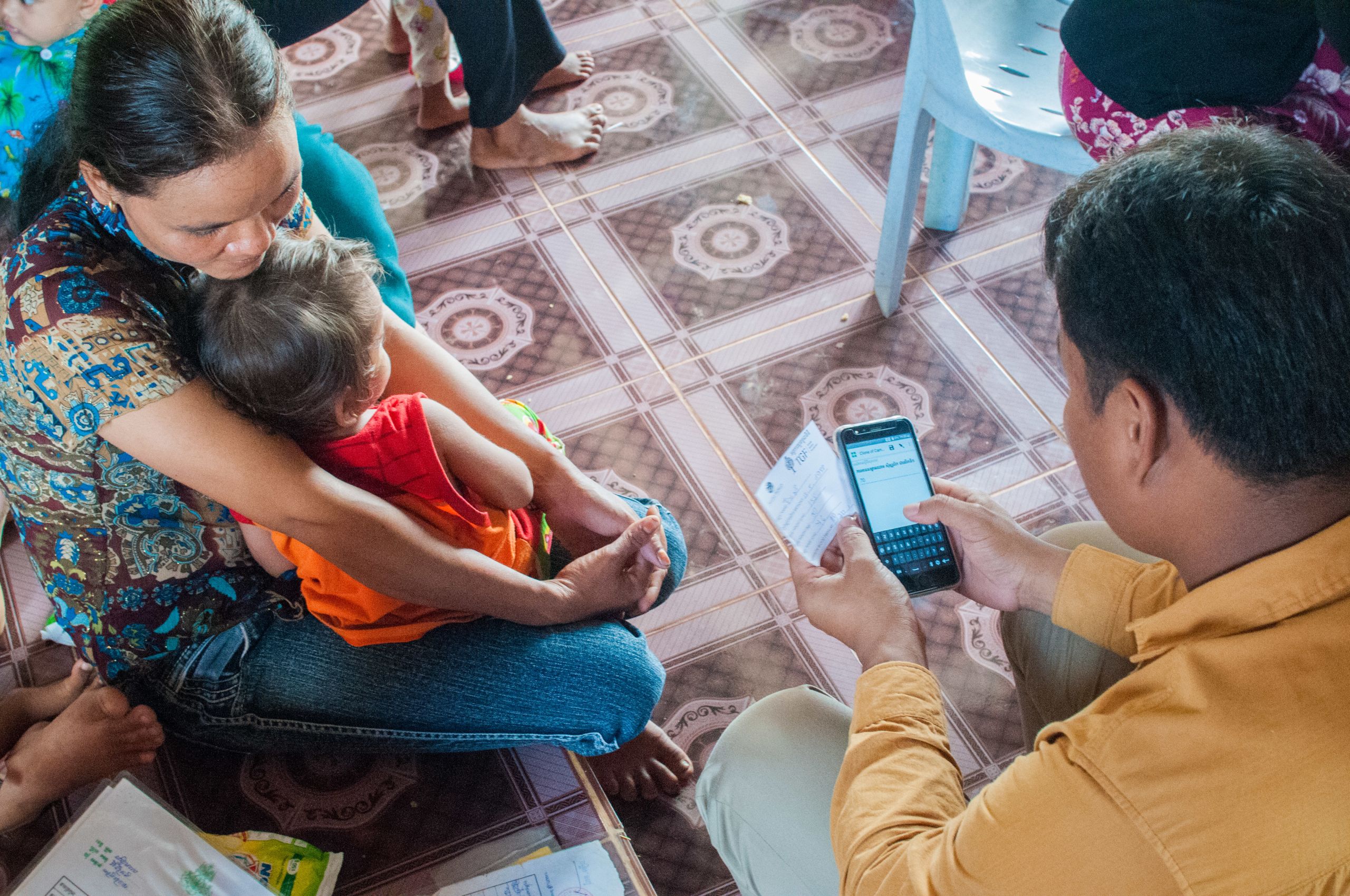
Chatbots step in
One recipient is StrongMinds, which provides mental health support to women and adolescents via free group talk therapy in Uganda and Zambia. With in-person sessions disrupted by COVID-19, it pivoted to providing teletherapy, but still faced the challenge of pinpointing and reaching users in need.
Thus, it conceived Amani — a WhatsApp-based chatbot providing information on signs of depression, helping people identify their feelings, and connecting them to further services if needed.
Jennifer Bass, manager of brand, content, and creative at StrongMinds, said Amani — which has so far served around 7,000 users — has helped expand services beyond earlier geographical constraints and facilitated an easier pathway to roll out in other countries later.
“As we’ve seen the pandemic ebb and flow, we’ve realized that there’s this huge appetite for information and remote phone-based group therapy services,” said Bass. “So even as the pandemic starts to recede in the future, we think that this will be a core part of our offerings moving forward.”
With the Chat for Impact Accelerator’s support, StrongMinds plans to add functionality, including video and audio, improve data capture to better understand the user journey, and fine-tune targeting and conversations.
“[It’s about] trying to get that balance between the friendly, wise aunt and solid clinical information that can help people make good choices about their mental health,” said Bass.
StrongMinds' Jennifer Bass explains how the organization's tele-therapy model utilizes a chatbot to make it easier for people to access mental health services.
“Typically, the 52% of the world we’re focused on live in harder-to-reach regions across low- and middle-income countries, and often over an hour away from health providers. So you’ve got to find ways to be able to connect them.”
Wider reach
Reach52, meanwhile, runs an existing platform designed to work on mobile phones even in low-connectivity regions, with plans to connect 250 million users to primary health care services by 2030.
Much of the current service is about equipping community health workers with the health tools they need to support patients. But Bryson said the WhatsApp service — which it plans to pilot in India — will open things up to being a real consumer-facing platform.
Reach52's Rich Bryson outlines how the organization plans to connect 250 million users to primary health care services by 2030.
“Typically, the 52% of the world we’re focused on live in harder-to-reach regions across low- and middle-income countries, and often over an hour away from health providers,” he said. “So you’ve got to find ways to be able to connect them.”
The integration of WhatsApp will allow people to get information and symptom advice on health conditions, identify screening available in their community, and book through the WhatsApp service via Reach52’s platform.
Bryson added that the pandemic has accelerated moves by social enterprises toward such services. “I think if you’re a health tech start-up in this period, where clearly health is more important than ever … it absolutely accelerates the work we’re doing to be able to make sure we can reach the communities we already operate in,” Bryson explained.

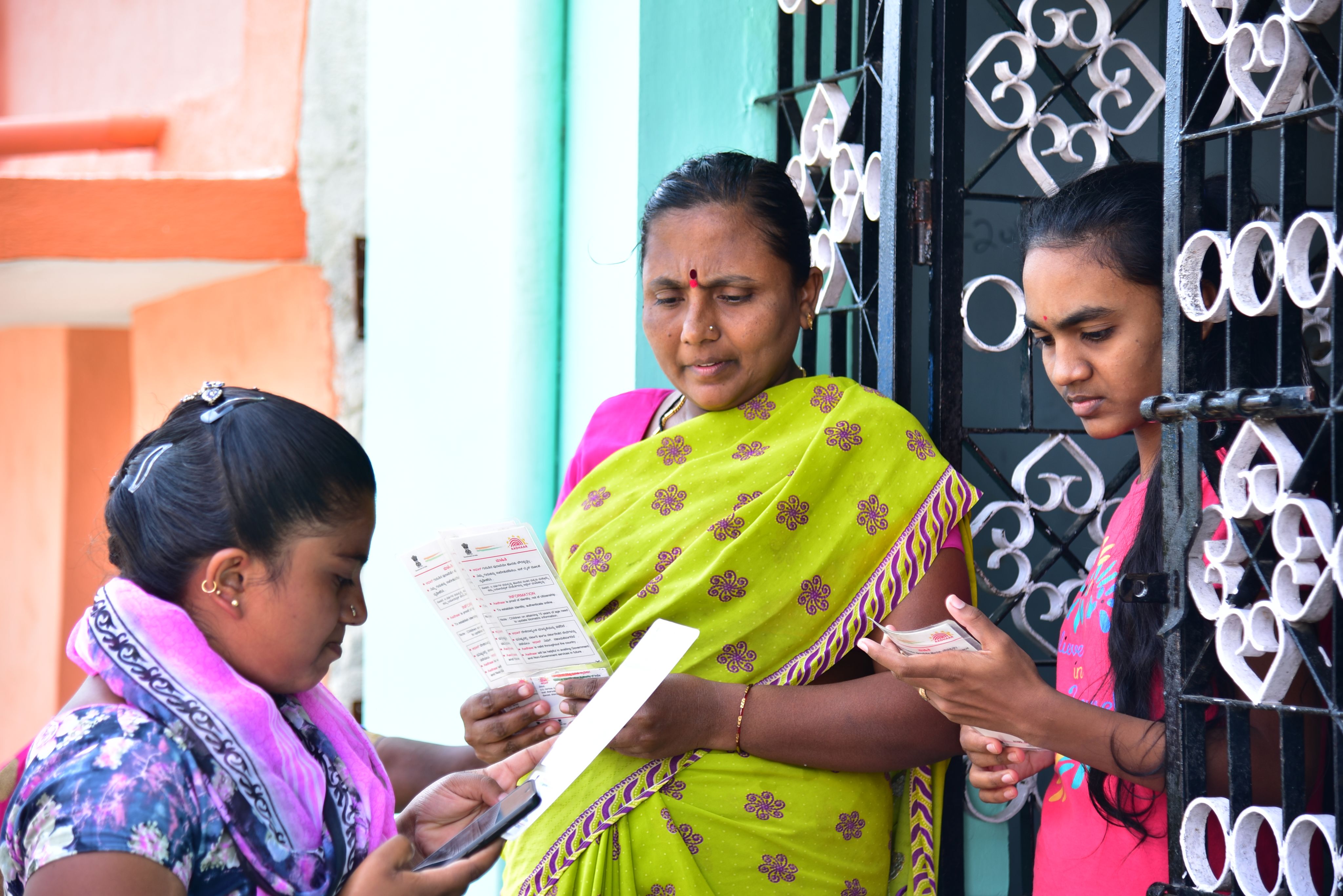
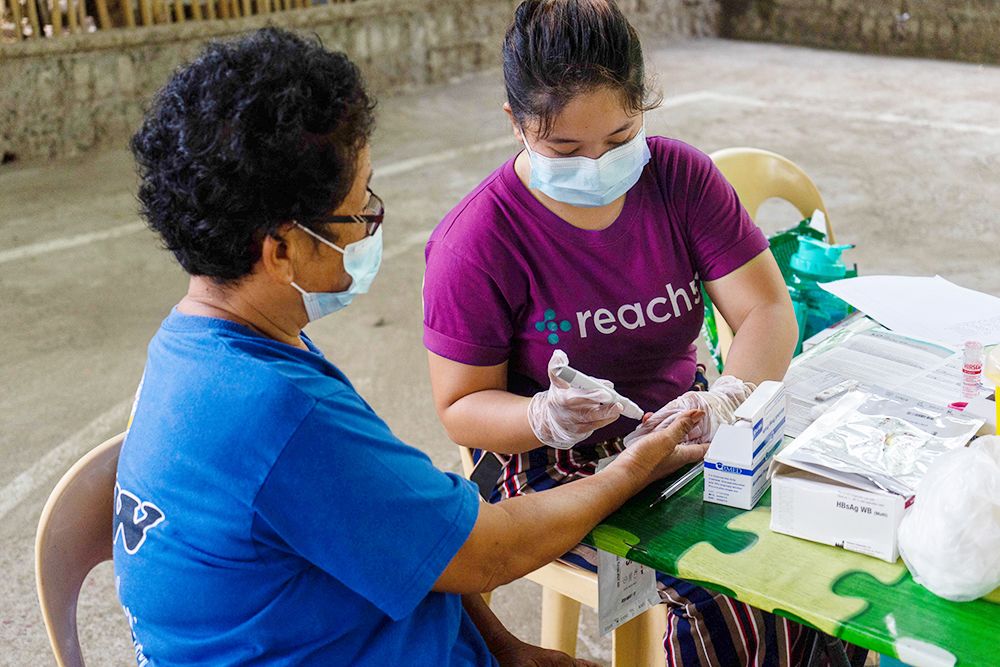
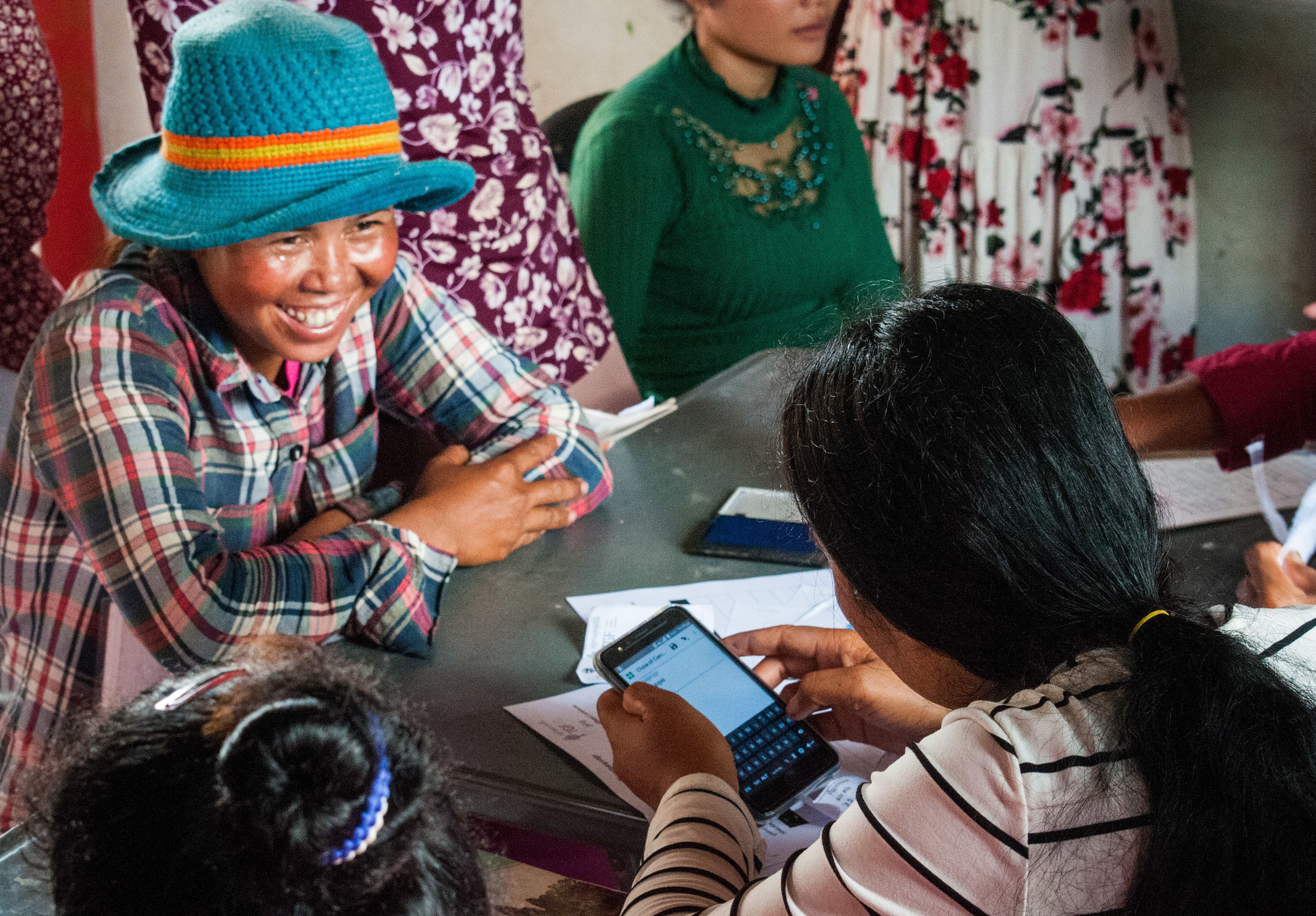

A reach52 agent conducts insurance sign-ups and resident profiling in Kolar, India. Photo: Viraj Kalakar / Smile World Photography.
A reach52 agent conducts insurance sign-ups and resident profiling in Kolar, India. Photo: Viraj Kalakar / Smile World Photography.

Hepatitis B screening demonstration at a neighborhood health worker training in Tigbauan, Iloilo, Philippines. Photo: Next Chapter Productions.
Hepatitis B screening demonstration at a neighborhood health worker training in Tigbauan, Iloilo, Philippines. Photo: Next Chapter Productions.

Blood pressure checking and profiling in Pongro Kraom, Cambodia.
Blood pressure checking and profiling in Pongro Kraom, Cambodia.
‘Chat to change’
In Brazil, another Chat for Impact Accelerator beneficiary, Talk2U, plans to use the support to boost its existing chatbot-based services, which are geared at inspiring youth toward behavioral and social change.
“We want to empower youths so they can, by themselves, create the changes that they want,” said Lucila Suarez Battan, co-founder and chief experience officer at Talk2U.
Talk2U's chat bots aim to help young people develop self-awareness and social and emotional skills, says Lucila Suarez Battan.
To aid that, Talk2U creates “chat stories” on different themes; employing artificial intelligence characters to talk to the user as if chatting to a friend; and encouraging participation in thinking about and resolving issues. Apart from text, they also use videos, audio, and images, while strategies for change are incorporated through evidence-based micro-interventions.
Talk2U's "Caretas" chat story explores the theme of digital safety and sexting.
For example, Talk2U currently offers Caretas, stories about sexting and digital safety; Fronteiras, about immigration; and the newly launched Amazon on Fire, which is about deforestation. “We call it the “chat to change” formula,” Battan said, adding that feedback posted by users has revealed they feel better after interacting with someone who has gone through the same experience.
Incorporating WhatsApp, Battan said, will add another channel that can further expand the reach of its chat stories as estimates suggest that Brazil has over 120 million WhatsApp users, which means giving services based on the platform can have wide potential reach.
"Amazon on Fire", a chat story available in Portuguese and Spanish, aims to mobilize young people to take action on climate change.
"Amazon on Fire", a chat story available in Portuguese and Spanish, aims to mobilize young people to take action on climate change.
New audiences
Meanwhile, in the United States, a chatbot developed by Chat for Impact Accelerator beneficiary Vote.org — which uses technology to simplify political engagement and increase voter turnout among underserved communities — can give an indication of the potential of such tools.
Ahead of last November’s presidential election and amid the COVID-19 pandemic, Vote.org ran its largest ever voter mobilization program. It also rapidly rolled out a bilingual WhatsApp chatbot that provided help on registering to vote, among other things. Offering information in both English and Spanish helped target communities including the country’s huge Latino population, of which around half are estimated to use WhatsApp regularly.
Alex Meadows shares how Vote.org's bilingual Whatsapp chatbot aims to increase voter turnout among underserved communities in the U.S.
Via the chatbot, Vote.org sent more than 148,000 messages to over 31,000 unique users — with multiple messages per user suggesting they interacted with the bot, said Alex Meadow, senior adviser at the organization. Thousands of people then went on to use the organization’s voter tools, he said.
Finding the right path
There are, however, still challenges in creating and making chatbots and messaging services accessible to everyone. For example, if half of the world is using the internet, half is not.
Key to addressing this, Bryson said, is striking a balance between technology and people, involving both whole families and communities in communicating essential messages about care and the related resources in places where mobile penetration may be lower while tailoring services for communities with lower levels of digital literacy.
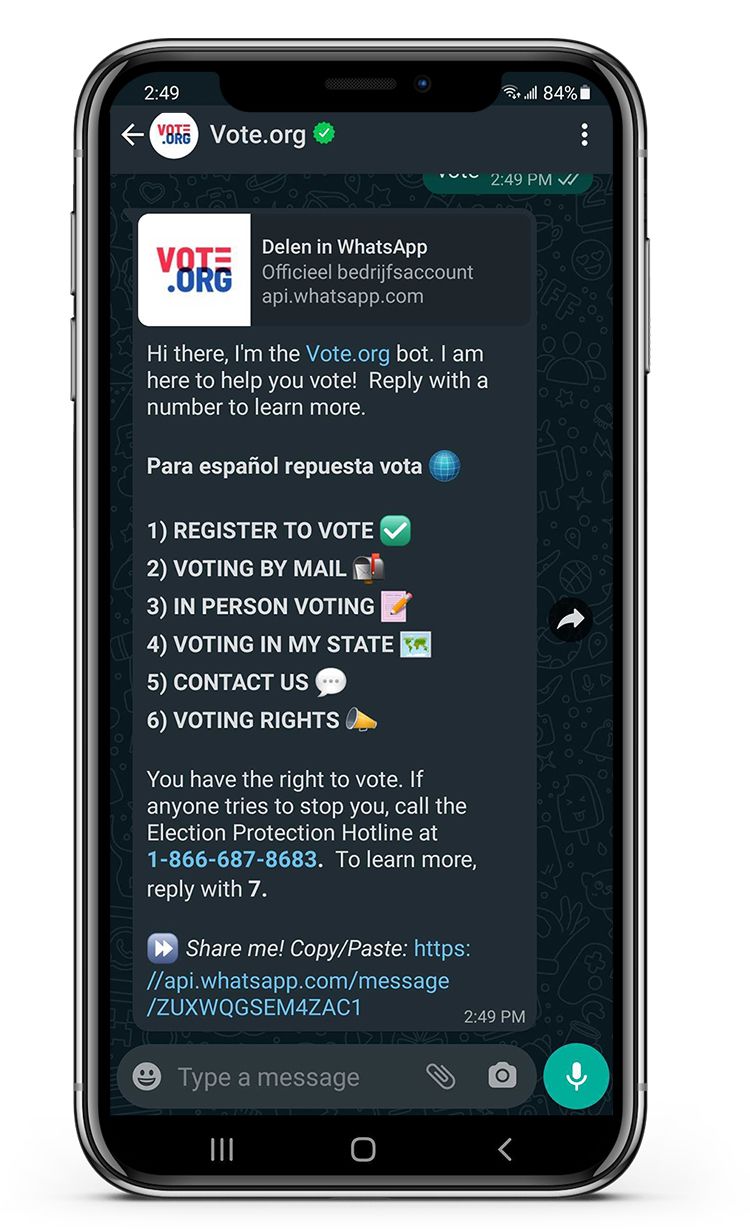
Vote.org's Whatsapp-based voter registration themed chatbot.
“It’s incredibly important to meet them [the users] where they are, and also to meet them in a language they feel comfortable in.”
“I think one of the absolutely essential aspects is building the trust of communities in using and adopting the services,” he added. “That’s why we’ve made a key part of our model equipping CHWs [community health workers] … who can then promote the benefits of digital health services, including the WhatsApp service.”
Social enterprises also point out that WhatsApp is an additional channel allowing broader access to services rather than a substitute for what they already offer. At StrongMinds, Bass said the service “is not a replacement for therapy, this is just a way to help people access therapy.”

Vote.org's Whatsapp-based voter registration themed chatbot.
Vote.org's Whatsapp-based voter registration themed chatbot.
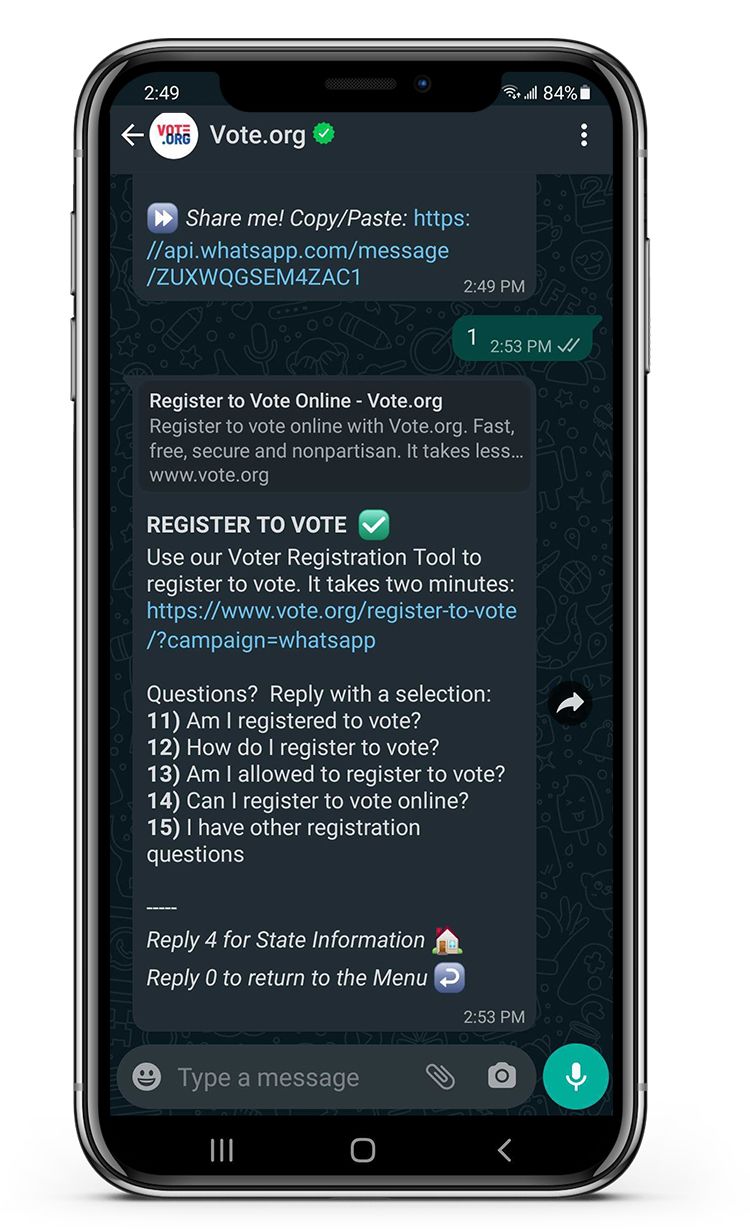
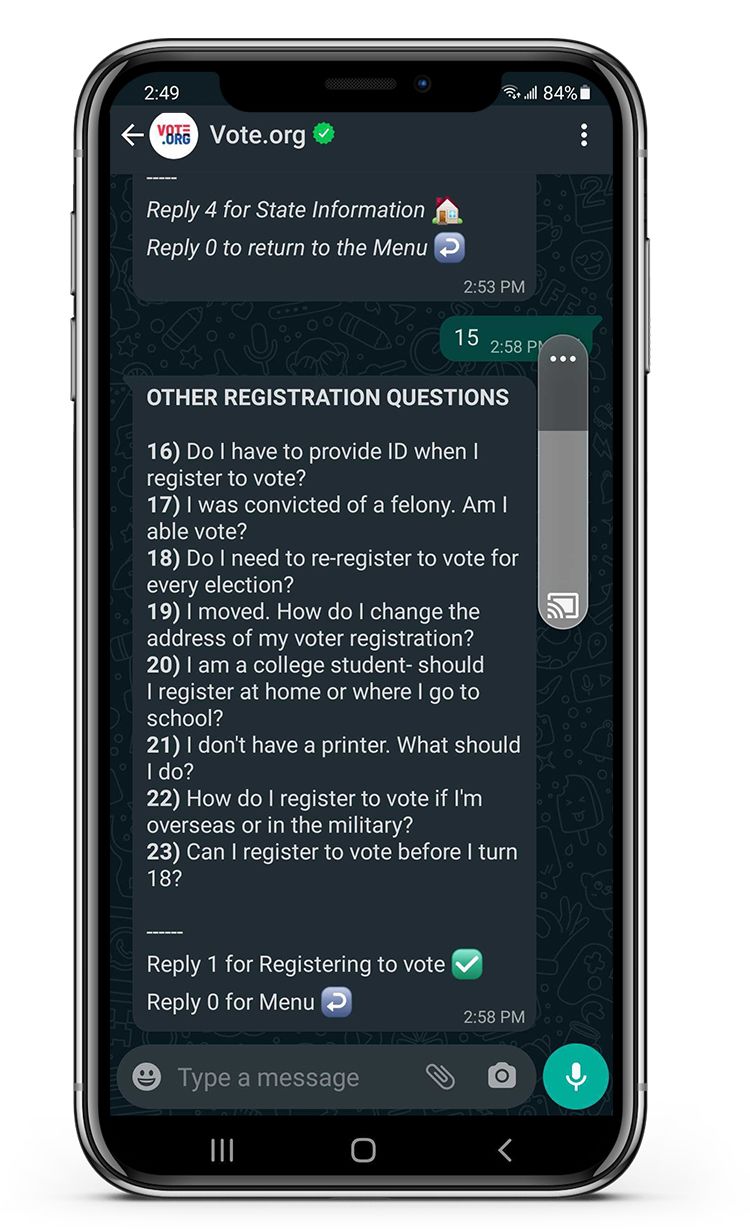
Learning together
Bass added that there are major challenges in areas such as making the content relevant for different local cultures and languages, but that this needs to be a continuous learning process that will take time to get right.
These are issues that everyone in the Chat for Impact Accelerator is having to contend with, Bass said, but that they can discuss and learn together. “This is such a new area that there is no playbook for how to do it, and do it right. But that’s what’s exciting — because we know we’re charting new territory, we know that we’re kind of inventing the space.”
The Chat for Impact Accelerator has provided a platform to share lessons learned with people in other countries, despite large differences in environment, Meadow added. “Whether you’re working in India or South Africa or the U.S., a lot of the questions can still be the same,” he said. “How do we ensure that users stick with the bot? What types of questions should we be asking of our data?”
But one key learning is the need to target the user in a way that makes them feel most comfortable in their own context: “It’s incredibly important to meet them where they are, and also to meet them in a language they feel comfortable in,” Meadow said.

Photos / video: Reach52 / StrongMinds / Talk2U / Vote.org
To stay in touch about the upcoming Chat for Impact Accelerators, join the Chat for Impact Community on LinkedIn to learn more, and share knowledge and best practice information.
For more information on Turn.io, email impact@turn.io


